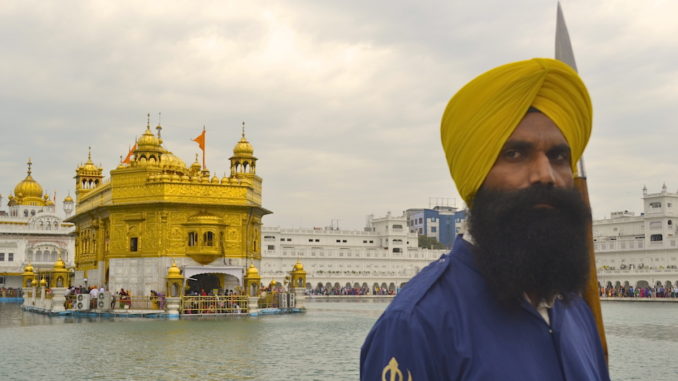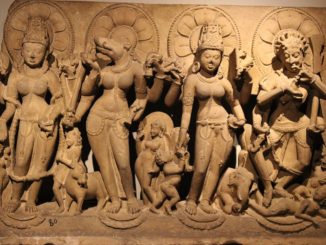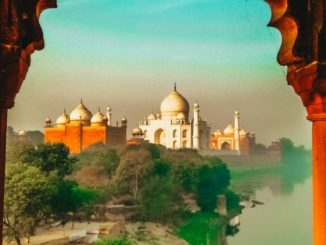
Punjab—the heart of Pakistan.
The land of five waters, and five seasons, known for its fertility, colorful panorama and exquisitely serene and clean atmosphere. Its waters have seen life being quenched since centuries. Its trees have embraced the wind that was fragrant by the immortal stories like Heer Ranjha, Sohni Mahiwal and Mirza Sahiban.
The soil which, nurtured sufi poets like Baba Farid, Ali Hajveri, Bulhe Shah, Shah Hussain, Mian Muhammad Bakhsh and Waris Shah.
Punjab has seen the starving of Budha and the wandering of Guru Nanak in search of truth. Its terrain has kept the secrets of Indus Valley civilizations along the River Indus at Harappa and many more un-discovered places.
Waters still sing here, winds never forget to whisper and rains know how do dance in Mon Soon.
So it is not a bad idea either to visit this place which is gifted with mountains, rivers, planes, fruits, trees, artifacts, historical monuments and the largest salt range of the world.
Here we are to present the worth seeing places that can make you feel the glory and grandeur of almost all parts of Punjab.
1. Taxila _A scent of the Past
_A promise for the Future
An important city of ancient Gandhara and a place that enlightened the Budha and one of the greatest archeological sites the world possesses today.
The ruins of Taxila, scattered about 30 KM away from Rawalpindi, represent the historical value of over 1000 years ago (around 500 BC to 500 AD). This place has the honor to have the world’s best known university at that ancient time offering subjects like law, medicine, arts etc.
At Taxila, various sites are scattered over a large area encompassing; Bhir Mound, Dharmarajika, Budhist Stupa and Monastery.
Moreover, one could find Sirsukh City remains, the Shrine of Double-headed eagle, Jandial temple, Sirsukh City and Jaulian Budhist Monastery etc.
The Taxila museum is known for its Gandhara artifacts, a rare blend of Greek and Budhist Art. This museum also has a collection of old coins, utensils, jewelry, toys and pottery manifesting the highlights of the life style of ancient Taxila.
2. Harappa _Rediscovering History
The Indus Valley civilization covers almost the exact area where Pakistan exists today. Mehrgarh in Balochistan, Mohenjo Daro in Sindh and Harappa in Punjab possess the clandestine of a common society.
Excavations have proved that around 3000 BC. Harappa was inhabited by nomadic tribes. The remains show a prosperous and comfortable life in that old epoch with emphasis on sanitation and everyday facilities. This land has trade relations with Egypt, the other developed civilization of the ancient world.
The archeological museum at the site entrance may take you to the wonder world of past through found artifacts.
The Salt Range _An Evaporated Sea
It is undoubtedly a geologist’s dream with variety of minerals and rocks. Having great natural beauty, this area varies in height between 750 and 1500 meters and climate is noticeably cooler in summer. The largest Salt Mine of the world, Khewra also exists here. On the other hand, Kallar Kahar with its salt lake and orchard, centuries old Hindu Temples at Ketas and pilgrimage sites are breathtaking.
This is the sea that extended over the Indus Plain and the Potowar Plateau that evaporated 600 million years ago. Rocks and fossils at this site provide the missing links of the story of earth. Around Khewra at Nandna, famous Muslim traveler and historian al-Beruni measured the circumference of the earth during 11th century.
3. Jhelum _Land of the Brave
Jhelum is located at the base of the Potowar Range, overlooking the endless green fields of the Punjab. Alexander the great crossed the river at this place and fought with Raja Poras, whom the famous quotation is related to, when he answered the Alexander,
“As a king would treat a king”
The famous Rohtas Fort, built by Sher Shah Suri is also located here which, is still standing against all odds. People here are endearingly hospitable, looking to welcome you with warmth and fervor.
Mangla, one of the largest dams of the world, is also built on river Jhelum.
4. Bahawalpur _Reminder of a Glorious Past
The princely state of Bahawalpur, founded in 1748 by Nawab Bahawal Khan Abassi. Located at the edge of the city of Multan, Bahawalpur is the gateway to the greatest desert; Cholistan. It is quite green in nature but towards south, the soil becomes sandy. This area is studded with many tourist spots like; Lal Sohanra National Park and the famous shrine of Uchh Sharif. The blue mosaics of the ruined tombs at Uchh Sharif, remind the glorious past. Among these, is the 15th century octagonal tomb of Bibi Jawindi.
Bhong Mosque is another important historical monument, known as Pakistan’s most ostentatious mosques.
5. Cholistan _Gateway to Adventure
Extended on the far south of the Punjab, Cholistan is the largest desert in Pakistan with an area of 25,000 sq. Km.
It touches the Thar Desert in the south and Rajhastan Desert in the east. About 1000 years ago, Cholistan was a fertile lplain watered with the Gaggar River (now called Hakra in Pakistan), archeolists have discovered 400 old inhabited sites, mostly dating back to the Indus Valley Civilization. In the middle of the desert, stands the Drawar Fort with massive walls and numerous buttresses. Nearby is the elegant Drawar Mosque, the exact replica of the Moti Masjid of Delhi’s Red Fort. About 45 Km. towards south of Drawar Fort is the shrine of Channan Pir, an important pilgrim center in the desert.
6. Multan _the Land of Mystics
Multan—probably the oldest surviving city in the south-West Asia. Every invader from Alexander through the Mughals to the British has fought for control of the city of Multan. This city has a unique feature of housing tombs and saints, more than any place of the world. Towering shrines made of brick, stone and wood add to the serenity of this place. Shrines of Shah Rukn e-Alam, Hazrat Bahaudin Zikirya and Shah Shams Tabrez are the most famous and visited ones. The galaxy of mosques and mausoleums of Multan, speak eloquently of the grandeur and sublimity of this great city. Blue stylistic and glazed pottery is a salient feature of the arts and crafts of Multan.
7. Lahore _Bastion of the Mughal Spirit
The famous metropolitan city and provincial capital of today, has got so much to speak of history. It holds within its bustling bazaars, historical monuments and narrow streets, the heritage of hundreds of years, the culture of royal tradition and force of spiritualism.
The shrine of Hazrat Ali Hajver known as Data Darbar welcomes everybody at the entrance of the city, while the walled city culture still grasps the close relationship between people.
Lahore was founded by Loh, the son of Rama Chandra, however the recorded history of Lahore dates back to 1021 AD when Lahore was conquered by Mahmood Ghaznavi who made it the capital of his Ghaznavi Empire. Then Mughals gave so much importance to this city, by awarding it the famous architecture in the form of gardens, mosques, tombs and the famous Fort. Shalamar Garden by Shahjehan and Badshahi mosque by Aurangzeb are the emblems of great history this city possesses. Jahangir and Nur Jehan are also buried here. Anarkali Bazar, Toligton Market, Lahore Museum and Punjab University (old Campus) jewels the famous Mall Road (Thandi Sarak). The British introduced here a combination of Mughal, Gothic and Victorian style of architecture.
Lahore offers a great deal more than just monuments, a variety of art galleries, museums, theatres and shopping arcades along with the cool tree-lined avenues, lush green lawns, fountains and modern high rise buildings.
8. Muree _Rediscovering Nature
The most popular and most developed hill-station of Pakistan. With a height of 7500 feet, Muree is a cool and crispy place in summer as well as in winter. This area is rich with towering pine trees, in long summer days; one could stroll lazily or ride ponies along shady path on the Mall- between Kasmir and Pindi Points.
There are the Gallies with their charming red roof chalets covered with snow in winter and set amidst fragrant pines. Muree, a jewel of a hillstation, nestles in the shadow of snow-clad peaks.
9. Nankana Sahib _Janam Isthan
Nankana Sahib, situated at 39 Km. south-west of Sheikhupura, is an important place of pilgrimage. There are two main Sikh temples or Gurdwaras here. Ba Lila where Guru Nanak the founder of Sikh religion spent his childhood and Janamasthan, where he is believed to have been born. Thrice a year on Besakhi (April), Death anniversary of Maharaja Ranjit Singh (June) and birthday of Guru Nanak Dev (November), Sikh yatris visit these holy places in thousands.
10. Rawalpindi _Base camp to Adventure
Rawalpindi, a twin city to Islamabad, is the gateway to the historical Silk Route. It presents a sharp contrast to the city of Islamabad. It is the base camp of thrill-exhibitors from all over the world who buckle up here to meet the most exciting and treacherous peaks in the world. Rawalpindi is famous for strong military cantonment, towns bazaars; Raja, Sarafa and Muree road. Moreover, historical Liaqat Bagh lies in the heart of the city.



